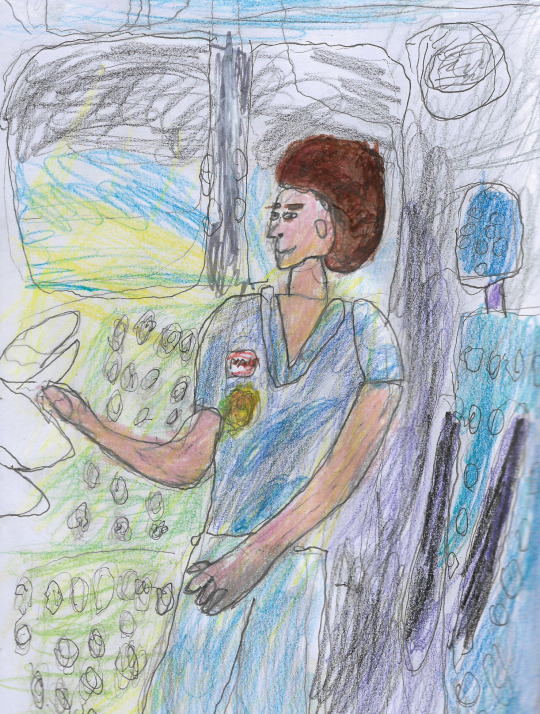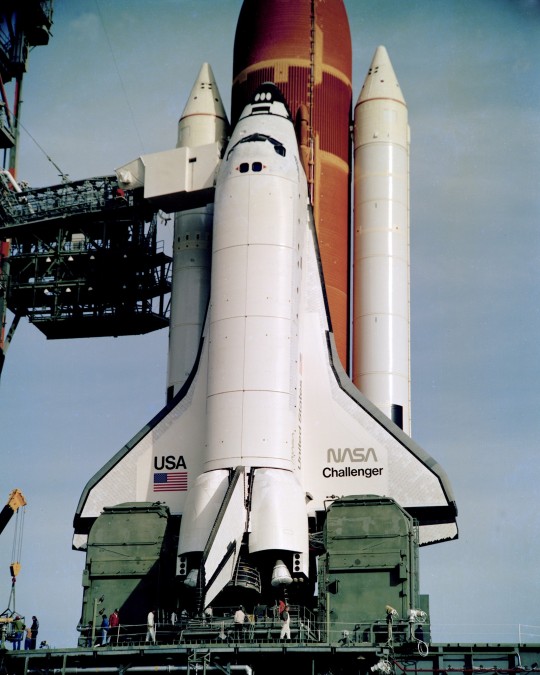#challenger space shuttle
Explore tagged Tumblr posts
Text

Challenger’s explosion, January 1986.
72 notes
·
View notes
Text
BOOK REVIEWS CHALLENGER
CHALLENGER By ADAM HIGGENBOTHAM This great read delves into the Challenger disaster and how, up to the night before the launch, there was concern about the solid fuel booster rockets due to the cold weather. Also, knowledge of problems with the o rings from previous launches added to concern…
#Challenger space shuttle#Columbia space shuttle#nasa#NASA disasters#space shuttle disasters#Walt Trizna
0 notes
Text
When asked what he was thinking about when preparing for launch abroad his Mercury-Redstone rocket, Alan Shepard, the first American in space, had infamously replied, "The fact that every part of this ship was built by the lowest bidder.”
Challenger: A True Story of Heroism and Disaster on the Edge of Space, Adam Higginbotham
#books i read in 2024#Adam Higginbotham#challenger#Challenger: A True Story of Heroism and Disaster on the Edge of Space#challenger space shuttle#Alan Shepard
0 notes
Text
The Inspiring Legacy of Women Physicians
September is Women in Medicine Month. Women doctors are leaders in humanitarian care, government service, social media, and innovative ways to provide care. You may already have noticed a change in the health care you receive, if not, you will.
updated July 15, 2024 Why celebrate women physicians? In 1860 the United States had 200 women physicians. By 1900, there were 7000. The number of female physicians has increased from 35,626 in 1975 to 404, 000 in 2023. Women physicians comprise 37% of actively practicing physicians in the United States. Women physicians-not the minority now In 2018, for the first time since Elizabeth…
#Apgar score#Challenger Space shuttle#Elizabeth Blackwell#Laurel Clark#Rebecca Crumpler#Virginia Apgar#women in medicine#women physicians
0 notes
Text
The elastomeric O-rings used to seal the solid booster rockets became brittle at around 0°C.
"Chemistry" 2e - Blackman, A., Bottle, S., Schmid, S., Mocerino, M., Wille, U.
#book quote#chemistry#nonfiction#textbook#challenger space shuttle#elastomeric#o rings#booster rockets#brittle
0 notes
Text

I made this in honor of American Astronaut and Physicist Doctor Sally Ride, who became the first American Woman in Space on June 18, 1983.
This drawing was a blast for me to make of such a remarkable woman, I hope y'all find it's subject as interesting as I do.
youtube
#June 1983#Sally Ride#NASA#Astronaut#Space Art#1983#Scientist#Physicist#Youtube#Tennis#Challenger Space Shuttle#OV-099#Space Shuttle#Shuttle Program#STS 7#Space Shuttle Challenger#1980s#LGBT Scientist#Women in Science#Space Exploration#Traditional Art#Colored Pencils#Color Pencil#Historical Art#Colored Pencil Drawing
1 note
·
View note
Text
Top Ten Livestream Fails of All Time
The Challenger Space Shuttle Disaster
#jokes#challenger#challenger space shuttle#challenger space shuttle disaster#space#1980s#nasa#livestream fail#if it was a real list this would be number two and number one would be when the second plane hit the twin tower#I said this
0 notes
Text
I'm not upset discussions of Sally Ride these days don't leave out the fact that she was a lesbian and therefore the first known queer person in space (albeit a fact only known after her death), but I hate that the fact that what is left out is that she, while part of the Roger's Commission after Challenger exploded, was the whistleblower who made sure the information for the defects of the O-rings made its way to Richard Feynman, who then famously, publicly, and on camera demonstrated how icy coldness (such as the cold and icy weather the morning before Challenger launched) could critically deform the O-rings used and keep them from forming a seal. This was also only revealed after she died. (x)
Whenever Sally Ride comes up these days among my (overwhelmingly queer) friends, we all acknowledge that she was a lesbian and celebrate what a role model she was not just for girls but for queer kids (and adults) too, but everyone is always surprised when I bring up the whistleblowing thing, which I think is damn shame and a disservice to her legacy.
#Sally Ride#Space Shuttle Challenger#Rogers Commission#NASA#Richard Feynman#Donald Kutyna#morton thikol#whistleblower#She is getting a well deserved statue in California but even the news reporting on it didn't make comment of the whistleblowing
13K notes
·
View notes
Text

Space Shuttle Challenger launches from Cape Canaveral, 29 July 1985.
610 notes
·
View notes
Text

We're right under the flight path for the scheduled orbital launch, but don't worry--it's too cold out for the rockets to operate safely, so I'm sure they'll postpone.
Situation [Explained]
Transcript Under the Cut
[An airship flying, labeled:] Hydrogen-filled scout airship for iceberg spotting
[The airship is chained to a ship, going along a river, labeled:] Unsinkable ocean liner
[In the background on the coast a nuclear power plant, labeled:] Soviet-era nuclear reactor undergoing a turbine test
[The boat and airship are steering towards a bridge, labeled:] Bridge prone to aeroelastic flutter in high winds
[Two unlabeled icebergs are on the water on either side of the bridge.]
[Caption below the panel:] In retrospect, we should have noticed how nervous the situation was making the engineers.
#xkcd#xkcd 2950#situation#webcomics#titanic#hindenburg#chernobyl#tacoma narrows bridge#space shuttle challenger
721 notes
·
View notes
Text

39 years ago today. May they all Rest In Peace 🙏🏻
107 notes
·
View notes
Text

"Space Shuttle Challenger waits on Launch Complex 39A at Kennedy Space Center before its first mission, STS-6, launched on April 4, 1983. Originally built as a test vehicle, in 1979 NASA issued a contract to convert it to a fully space-rated orbiter. It became the second operational Shuttle, delivered to Kennedy Space Center in July 1982. Challenger was destroyed shortly after lift off on her 10th mission, STS-51L, on January 28, 1986."
Date: January 26, 1983
NASA ID: KSC-83PC-0028
#STS-6#Space Shuttle#Space Shuttle Challenger#Challenger#OV-099#Orbiter#NASA#Space Shuttle Program#January#1983#LC-39A#Kennedy Space Center#Florida#my post
168 notes
·
View notes
Text

Cloud coverage over the Amazon River Basin, STS-7.
26 notes
·
View notes
Text

This Day in History: Space Shuttle Challenger
On this day in 1986, Ronald Reagan was supposed to give his State of the Union address. Instead, the nation was dealt a terrible blow when the Space Shuttle Challenger exploded in mid-air. Reagan delayed his planned address and spoke directly to a grieving nation instead.
"We will never forget them, nor the last time we saw them," Reagan told the nation, "this morning, as they prepared for their journey and waved goodbye and 'slipped the surly bonds of earth' to 'touch the face of God.'"
The loss of the Challenger is one of those events that you do not forget, if you lived through it. You probably remember precisely where you were when you heard the news (or perhaps watched it live on TV).
RIP to seven great American pioneers! Men and women such as these are the reason that our country has aspired to greatness--and so often achieved it. ❤🇺🇸❤🇺🇸❤
#tdih#otd#this day in history#history#space shuttle#challenger#America#space#space history#sharethehistory
25 notes
·
View notes
Text

This iconic photograph is still considered one of the most-terrifying space photographs to date. Astronaut Bruce McCandless II became the first human to do a spacewalk without a safety tether linkd to a spacecraft. In 1984, he floated completely untethered in space with nothing but his Manned Maneuvering Unit keeping him alive.
Here are some fascinating details about Bruce McCandless' historic spacewalk:
*Mission Details:*
1. Mission: STS-41-B (Space Shuttle Challenger) 2. Date: February 7, 1984 3. Duration: 5 hours, 55 minutes
*Spacewalk (EVA) Details:*
1. First untethered spacewalk in history 2. McCandless used the Manned Maneuvering Unit (MMU) to move freely in space 3. Distance from Space Shuttle Challenger: up to 320 feet (98 meters) 4. MMU propulsion: 24 thrusters, using nitrogen gas
*Astronaut's Experience:*
1. McCandless described the feeling as "breathtaking" and "exhilarating" 2. He performed various tasks, including testing the MMU and performing maneuvers 3. Communication with the shuttle crew was maintained through radio
*Historic Significance:*
1. Demonstrated the feasibility of untethered spacewalks 2. Paved the way for future spacewalks and space exploration 3. Showcased the capabilities of the Manned Maneuvering Unit
*Interesting Fact:*
1. The iconic photograph of McCandless was taken by fellow astronaut Robert “Hoot” Gibson.
Bruce McCandless' courageous spacewalk marked a significant milestone in space exploration history!
(source fb original post here) (nasa link to image above here) (nasa history: The Iconic Photos from STS-41B: Documenting the First Untethered Spacewalk)
31 notes
·
View notes
Text

Ronald McNair was an American NASA astronaut and physicist. He died at the age of 35 during the launch of the Space Shuttle Challenger on mission STS-51-L on January 28, 1986, in which he was serving as one of three mission specialists in a crew of seven.
Prior to the Challenger disaster, McNair flew as a mission specialist on STS-41-B aboard Challenger from February 3 to 11, 1984, becoming the second black American in space.
In the summer of 1959, Ronald McNair refused to leave the segregated Lake City Public Library in South Carolina without being allowed to check out his books. After the police and his mother were called, McNair was allowed to borrow books from the library; the building that housed the library at the time is now named after him. A children's book, Ron's Big Mission, offers a fictionalized account of this event.
#ronald mcnair#american#nasa#astronaut#physicist#stem#scientist#space shuttle#challenger#01/28#mission specialist#lake city public library#library#book#books#segregated#ron's big mission#blm#black history month#south carolina#civil rights#human rights#wikipedia
43 notes
·
View notes